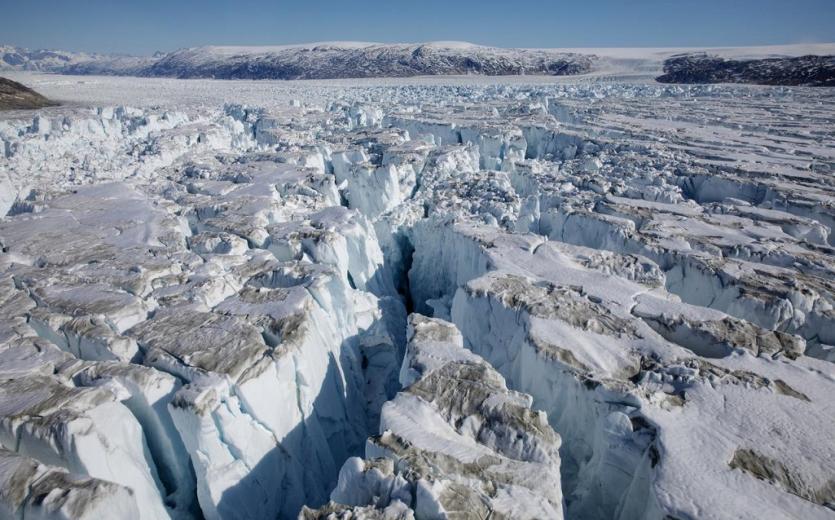Crevasses form on top of the Helheim glacier near Tasiilaq, Greenland, June 19, 2018. Photo:Reuters
Polluting ships continue to sail through melting Arctic ice and waters
By Patryk Krych | The World Daily | AUGUST 28th 2020
A Reuters analysis found that as more ice melts in the polar Arctic waters, more ships have routes of travel to traverse the icescapes, spreading the pollution they carry along with them to the already endangered lands.
The analysis, done by Reuters, was one that looked at new shipping and fuel-consumption data. It isn’t the only research done on the topic, as further data collected and examined at the Centre for High North Logistics at Norway’s Nord University found that, between 2016 and 2019, ship traffic had increased by an entire 58% in the Arctic region’s Siberian coast – its busiest and most commonly travelled route.
The data also revealed that 2,694 voyages were made on the Northern Sea Route last year. Most of these were primarily ships carrying trading merchandise, with large transports of fuels, iron ore, oil, liquefied natural gas (LNG), and similar commodities.
It’s well known by now that shipping in such a manner is harmful for the environment. However, it’s known to be particularly harmful in the Arctic region due to its icy conditions. Every passing ship will release its fair share of climate-harming carbon dioxide emissions into the atmosphere, but what worsens the crisis is their consistent emission of black soot. The soot released by the ships will often mix with the snow and ice nearby, which leads to the ice absorbing solar radiation rather than reflecting it. This exacerbates the warming crisis in the polar region, where the melting of ice means the rising of global sea levels.
“The driving concern is the reduction of Arctic sea ice and the potential for more shipping,” said the lead adviser with the Clean Arctic Alliance, Sian Prior. “We are already seeing that happen.”
The pollution reaches a far more industrial level than originally thought, as recently, it was also discovered that pesticides and other chemical compounds were found in the Norwegian archipelago Svalbard. The chemicals had been deposited in the snow, on top of four high-elevation glacier sites, in what’s usually considered a “pristine” environment.
A study published in early July delved deeper into this pollutant crisis in the Arctic, finding that thirteen organochlorine pesticides, and seven industrial compounds had all been deposited in the surface snow of the glacial region. Organochlorine pesticides are known to contain harmful neurotoxins, having seen use throughout the 1940s to the 1960s, for agriculture and mosquito killing. Their presence in the Arctic snow is extremely harmful and dangerous, to say the least.
These pollutants had been traced back to what’s suspected to be their places of origin, through the help of computer modelling, called the Hybrid Single Particle Lagrangian Integrated Trajectory. The results show that the United States and Russia are the most likely places of origin. They are also among the biggest commodity producers, alongside Canada and China, perpetuating the greater inflow of ships through the Arctic region.






